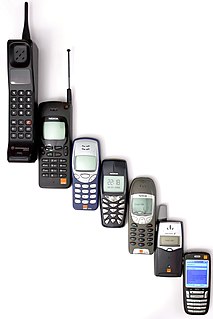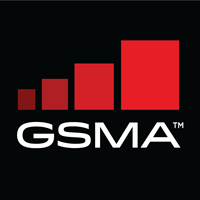A SIM lock, simlock, network lock, carrier lock or (master) subsidy lock is a technical restriction built into GSM and CDMA mobile phones by mobile phone manufacturers for use by service providers to restrict the use of these phones to specific countries and/or networks. This is in contrast to a phone that does not impose any SIM restrictions.
SyncML is the former name for a platform-independent information synchronization standard. The project is currently referred to as Open Mobile Alliance Data Synchronization and Device Management. The purpose of SyncML is to offer an open standard as a replacement for existing data synchronization solutions, which have mostly been somewhat vendor-, application- or operating system specific.
MSISDN is a number uniquely identifying a subscription in a Global System for Mobile communications or a Universal Mobile Telecommunications System mobile network. It is the mapping of the telephone number to the subscriber identity module in a mobile or cellular phone. This abbreviation has several interpretations, the most common one being "Mobile Station International Subscriber Directory Number".
The Type Allocation Code (TAC) is the initial eight-digit portion of the 15-digit IMEI and 16-digit IMEISV codes used to uniquely identify wireless devices.
A mobile station (MS) comprises all user equipment and software needed for communication with a mobile network.
An international mobile subscriber identity-catcher, or IMSI-catcher, is a telephone eavesdropping device used for intercepting mobile phone traffic and tracking location data of mobile phone users. Essentially a "fake" mobile tower acting between the target mobile phone and the service provider's real towers, it is considered a man-in-the-middle (MITM) attack. The 3G wireless standard offers some risk mitigation due to mutual authentication required from both the handset and the network. However, sophisticated attacks may be able to downgrade 3G and LTE to non-LTE network services which do not require mutual authentication.
The Reporting Body Identifier is the first two digits of a Global System for Mobile Communications (GSM) Type Allocation Code, and indicates the GSMA-approved organization that registered a given mobile device, and allocated the model a unique code.
The British Approvals Board for Telecommunications (BABT) is a telecommunications certification body.
Electronic serial numbers (ESNs) were created by the U.S. Federal Communications Commission (FCC) to uniquely identify mobile devices, from the days of AMPS in the United States starting in the early 1980s. The administrative role was taken over by the Telecommunications Industry Association in 1997 and is still maintained by them. ESNs are currently mainly used with CDMA phones, compared to International Mobile Equipment Identity (IMEI) numbers used by all GSM phones.
A mobile equipment identifier (MEID) is a globally unique number identifying a physical piece of CDMA2000 mobile station equipment. The number format is defined by the 3GPP2 report S.R0048 but in practical terms, it can be seen as an IMEI but with hexadecimal digits.
Phone cloning is the copying of identity from one cellular device to another.
A Central Equipment Identity Register is a database of the IMEI numbers of blacklisted handsets. If a device's ESN or IMEI number is listed on a CEIR, it is not supposed to work on member service providers' networks; only paying members may access the database.

A mobile phone, cell phone, cellphone, or hand phone, sometimes shortened to simply mobile, cell or just phone, is a portable telephone that can make and receive calls over a radio frequency link while the user is moving within a telephone service area. The radio frequency link establishes a connection to the switching systems of a mobile phone operator, which provides access to the public switched telephone network (PSTN). Modern mobile telephone services use a cellular network architecture, and, therefore, mobile telephones are called cellular telephones or cell phones, in North America. In addition to telephony, 2000s-era mobile phones support a variety of other services, such as text messaging, MMS, email, Internet access, short-range wireless communications, business applications, video games, and digital photography. Mobile phones offering only those capabilities are known as feature phones; mobile phones which offer greatly advanced computing capabilities are referred to as smartphones.

The GSM Association is a trade body that represents the interests of mobile network operators worldwide. Approximately 800 mobile operators are full GSMA members and a further 300 companies in the broader mobile ecosystem are associate members. The GSMA represents its members via industry programmes, working groups and industry advocacy initiatives.

The Dell Venue Pro, codename Lightning, was a smartphone running the Windows Phone operating system. The phone used the T-Mobile network, but was only available for purchase at Microsoft retail stores or directly from Dell.

The Nokia 1202 is a low-end GSM mobile phone sold by Nokia under their Ultrabasic series. It was announced in November 2008 and was released in April 2009, being aimed at first-time mobile phone users.
UCWeb Inc. is a Chinese mobile Internet company that offers products and services including mobile browser, UC News, search and so on. Its flagship product, UC Browser, topped the China, Indonesia and India market in 2013.

The Institution of Mechanical Engineers (India) is the Professional Body for Mechanical Engineers in India. It was founded in 1914 to advance and update knowledge, business & practice of mechanical engineering professionals.
JingWang Weishi is a mobile phone application used for surveillance of residents in Xinjiang, China.





